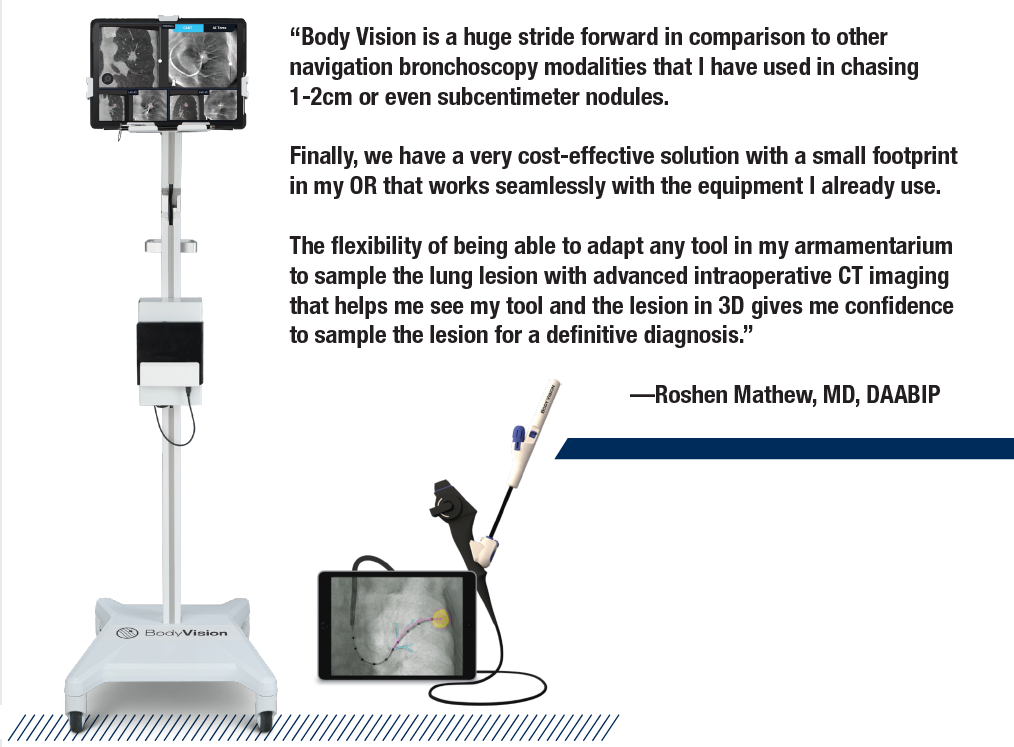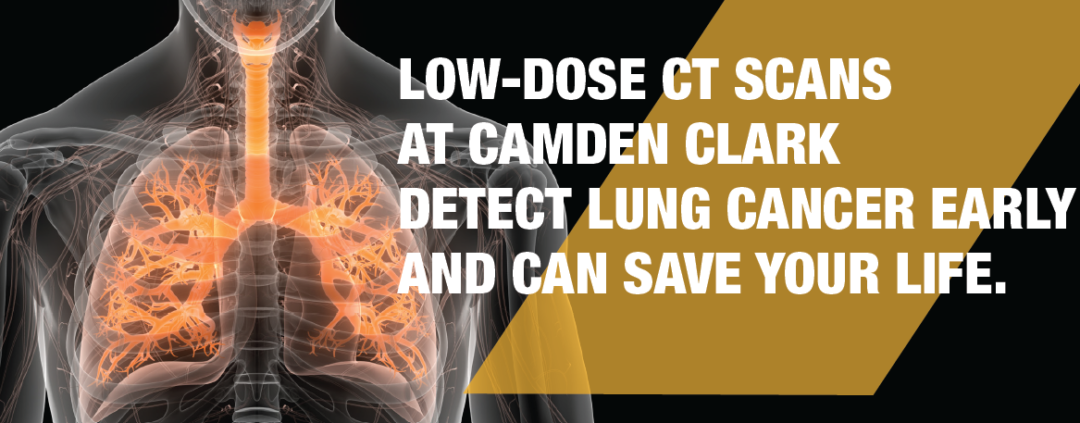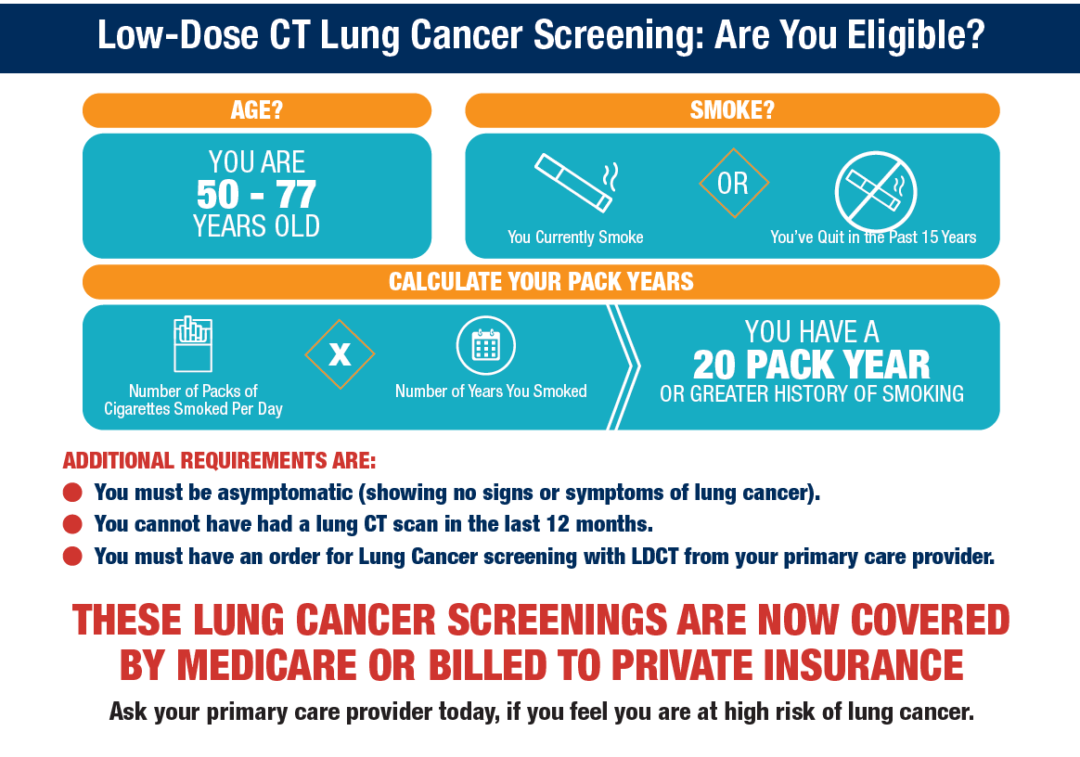
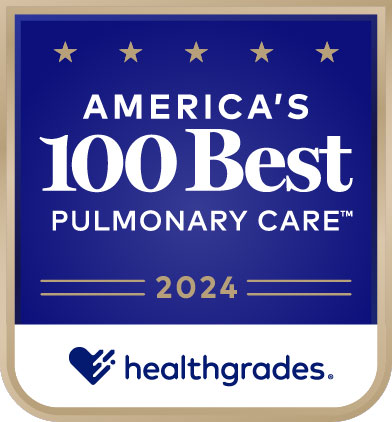
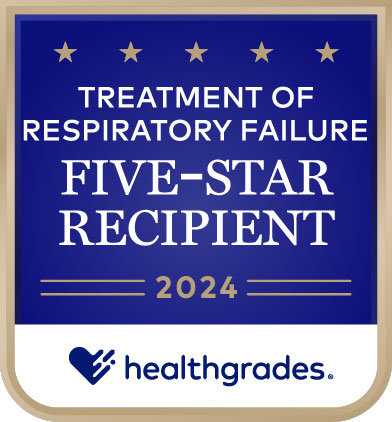
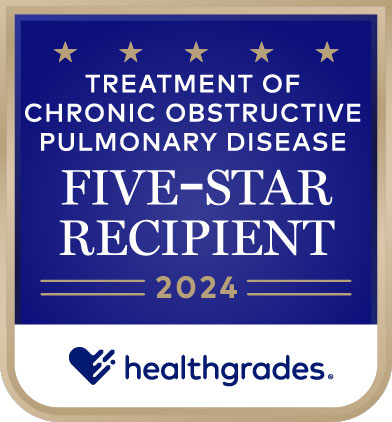
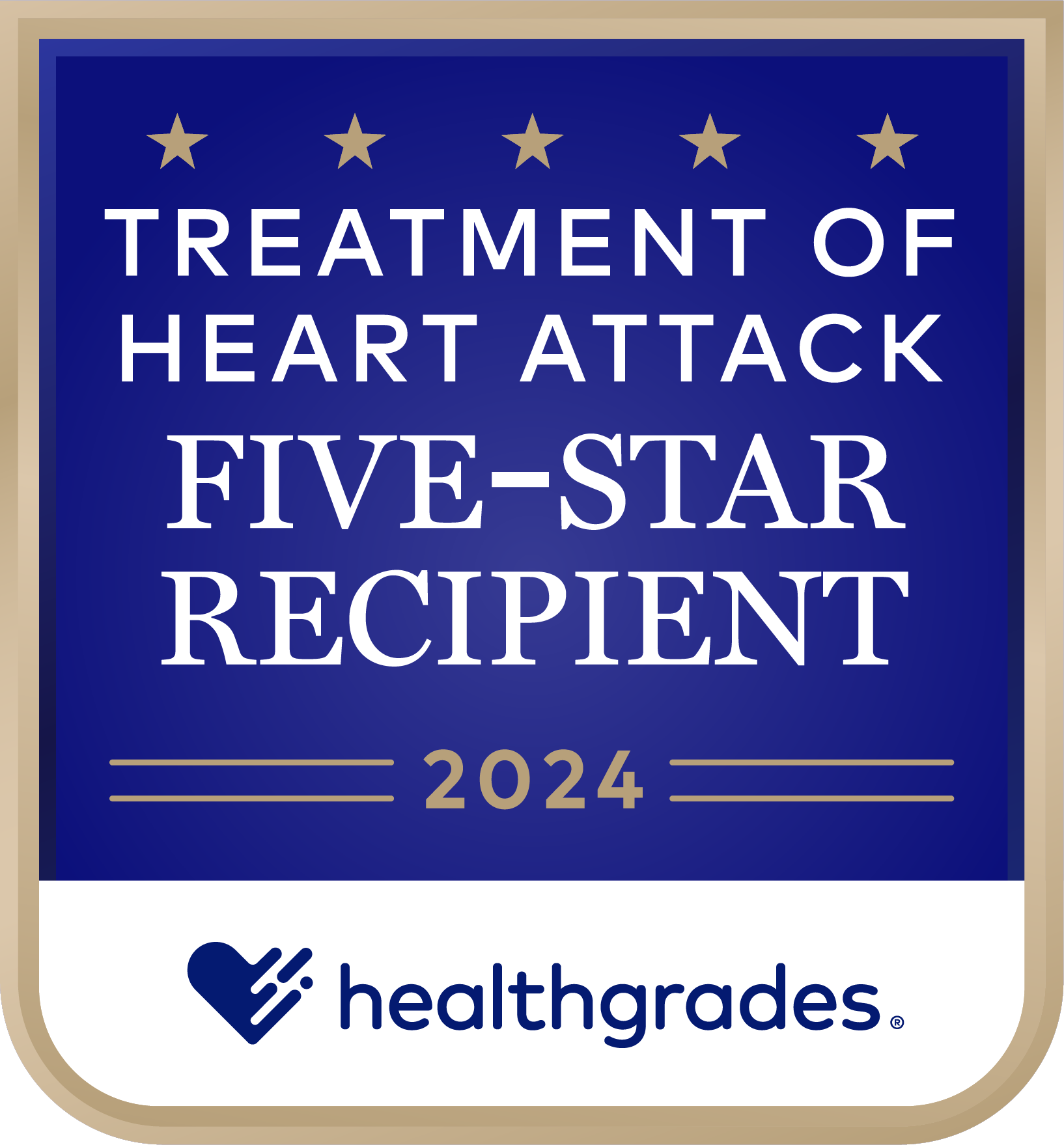
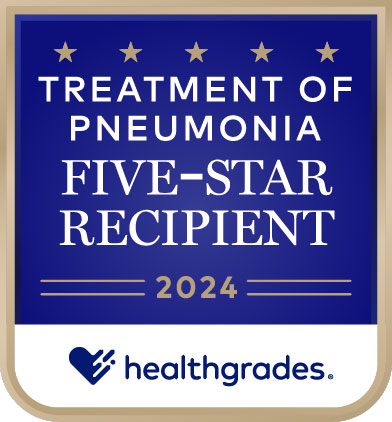
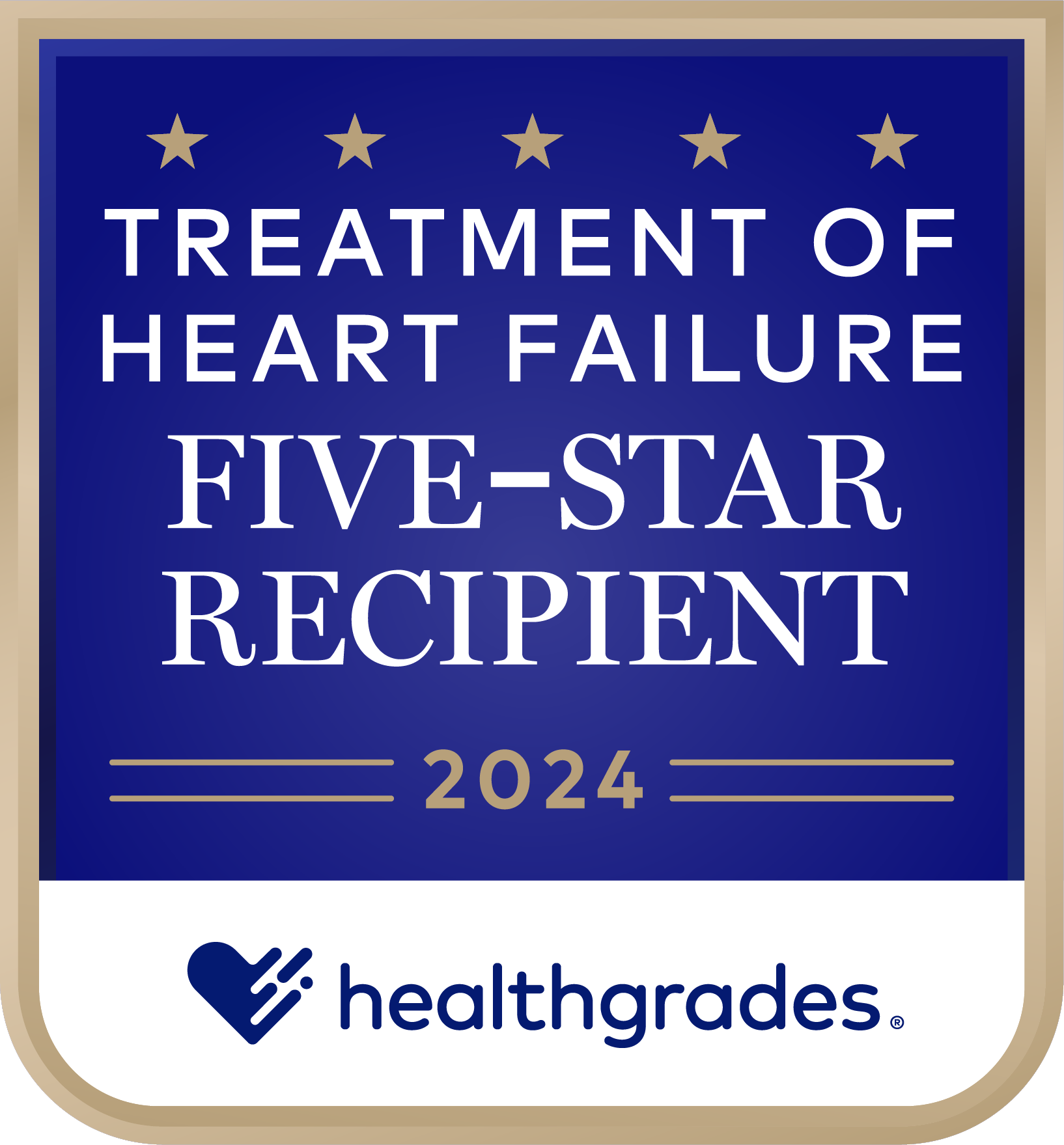
Breathe Easier with Award-Winning Pulmonary Care
If you’re experiencing any breathing problems or allergies, our pulmonary specialists can help you breathe easier. Our highly-trained providers are skilled at helping people with a wide range of diseases and disorders of the lungs and respiratory tract. Experience award-winning pulmonary care with us, at WVU Medicine Camden Clark Medical Center.
Interventional Pulmonology (IP) uses the latest technology to diagnose and treat a variety of lung conditions using minimally invasive techniques. IP is an advanced subspeciality of pulmonary medicine. Interventional pulmonologists undergo advanced training to provide these specialized services.
Dr. Roshen Mathew is the director of interventional pulmonary services at WVU Camden Clark Medical Center. He is one of the only two interventional pulmonologists in the state of West Virginia. He has undergone a specialized fellowship for this and has years of experience in this field. He is board certified by the American Association for Bronchology and Interventional Pulmonology (AABIP) and is involved in research and innovations with this field.
The Interventional Pulmonology (IP) Program at WVU Camden Clark Medical Center is the only program in the Mid-Ohio valley, and one of the two in the state of West Virginia. As part of our comprehensive lung program, our board-certified interventional pulmonologist and thoracic surgeons perform advanced diagnostic bronchoscopy, pleural procedures, and therapeutic bronchoscopy.
The IP Program offers consultation services for both malignant and benign disorders of the lung and the airways and a multidisciplinary approach to evaluation and management.
What We Treat
We treat a variety of pulmonary issues including:
- chronic obstructive pulmonary disease (COPD), including chronic bronchitis, emphysema, asthma, and cystic fibrosis
- interstitial lung diseases, including sarcoidosis, pulmonary fibrosis, hypersensitivity pneumonitis, and pulmonary vasculitis
- lung infections, particularly in people with suppressed immune systems
- lung cancer
- occupational lung diseases
- respiratory disorders associated with sleep
- Hemoptysis
- Pneumothorax
- Pleural effusions
- Prolonged air leaks after lung surgery
- Pulmonary alveolar proteinosis (PAP)
- Tracheal stenosis, Tracheal mass
- Bronchial strictures
- Lung Nodules and mass
- Airway obstruction and or lung atelectasis caused by cancer
Procedures Performed
Advanced Diagnostic Endoscopy & Bronchoscopy
- Navigation bronchoscopy for lung nodules
- Endobronchial ultrasound (EBUS)-guided transbronchial needle aspiration of mediastinum
- Esophageal Ultrasound (EUS- FNA) guided fine needle aspiration of mediastinum, liver, adrenal glands and paraoesophageal masses.
- Radial endobronchial ultrasound for lung nodules
- Transbronchial cryobiopsy
Ultrasound guided biopsy
- Ultrasound guided biopsy of the lymph nodes, liver, and lung mass
Therapeutic Bronchoscopy
- Rigid bronchoscopy
- Airway stent placement
- Foreign body removal
- Balloon dilation of airways
- Endobronchial cryotherapy
- LASER, and Argon plasma coagulation
- Electrocautery/electrosurgery
- Endobronchial valve placement for persistent air leaks
- Bronchoscopic lung volume reduction for Emphysema (BLVR)
- Fiducial placement for radiation therapy
- Percutaneous Tracheostomy
- Whole lung lavage
Pleural Procedures
- Pleural ultrasound guided biopsy
- Thoracentesis
- Tunneled indwelling pleural catheter placement
- Chemical Pleurodesis
- Thoracoscopic pleural biopsies and pleurodesis.
Respiratory Therapy Services
Respiratory care practitioners are directly involved in diagnosis, treatment, and preventive care of the patient with respiratory problems. Patients with COPD, emphysema, asthma, chronic bronchitis, lung cancer, and other chronic and acute lung conditions may benefit from respiratory care. Procedures include breathing treatments, arterial blood gases, oxygen administration, incentive spirometry, CPAP/BiPAP, and ventilator management.
Pulmonary Rehabilitation Program
Our Pulmonary Rehabilitation Program is a comprehensive education and exercise program may benefit patients who have chronic obstructive pulmonary disease (COPD), emphysema, asthma, chronic bronchitis, lung cancer, and other chronic lung conditions. The Pulmonary Rehabilitation Department also offers monthly support group meetings.
Zephyr® Endobronchial Valve Procedure for Severe COPD/Emphysema
What is the Zephyr Valve Treatment?
The Zephyr Valve treatment is a minimally invasive procedure designed for patients with severe COPD/emphysema. After the Zephyr Valve procedure is performed, patients have reported immediate relief.
The Zephyr Valve treatment provides relief for patients by closing diseased parts of the lung off from the respiratory process and inserting a valve or valves to restore the healthy parts of the lungs. Zephyr Valves are an effective alternative to the traditional invasive lung volume reduction procedure.
Who is the Zephyr Valve for?
Generally, candidates eligible for Zephyr Valve treatment are patients who:
- Have a confirmed diagnosis of COPD or emphysema
- Have to stop to catch their breath often, even with taking their medication as directed
- Have reduced lung function (FEV1≤50% predicted)
Patients meeting the general criteria for Zephyr Valve treatment may receive evaluation at Camden Clark to determine whether they are an eligible candidate.
What are the Benefits of Zephyr Valves?
Patients treated with Zephyr Valves have been shown to:
- Breathe easier
- Be more energetic and active
- Be less short of breath
- Enjoy a significantly improved quality of life compared to untreated patients
How Does the Procedure Work?
Patients with severe COPD/emphysema may struggle to catch their breath while completing or attempting everyday tasks. Breathing issues are commonly experienced by these patients when damaged parts of the lungs have lost their ability to release trapped air and have become overinflated.
Zephyr Valves are tiny, one-way valves that allow the trapped air to be exhaled from the lungs while preventing more air from becoming trapped inside, allowing for easier breathing.
What Can Patients Expect During Zephyr Valve Treatment?
Upon arrival for a non-invasive Zephyr Valve procedure, patients can expect:
- Step 1 – The patient will receive medication that will make them feel drowsy.
- Step 2 – A small tube with a camera, called a bronchoscope, will be inserted into the lungs through the nose or mouth.
- Step 3 – On average, the healthcare provider will place four Zephyr Valves within the airway. The number of valves placed will vary.
- Step 4 – Inpatient care will be required for a minimum of three nights following the procedure.
- Step 5 – Patients will be required to continue medications as prescribed by the healthcare provider following the procedure.
To schedule a consultation, contact 304-424-4721.

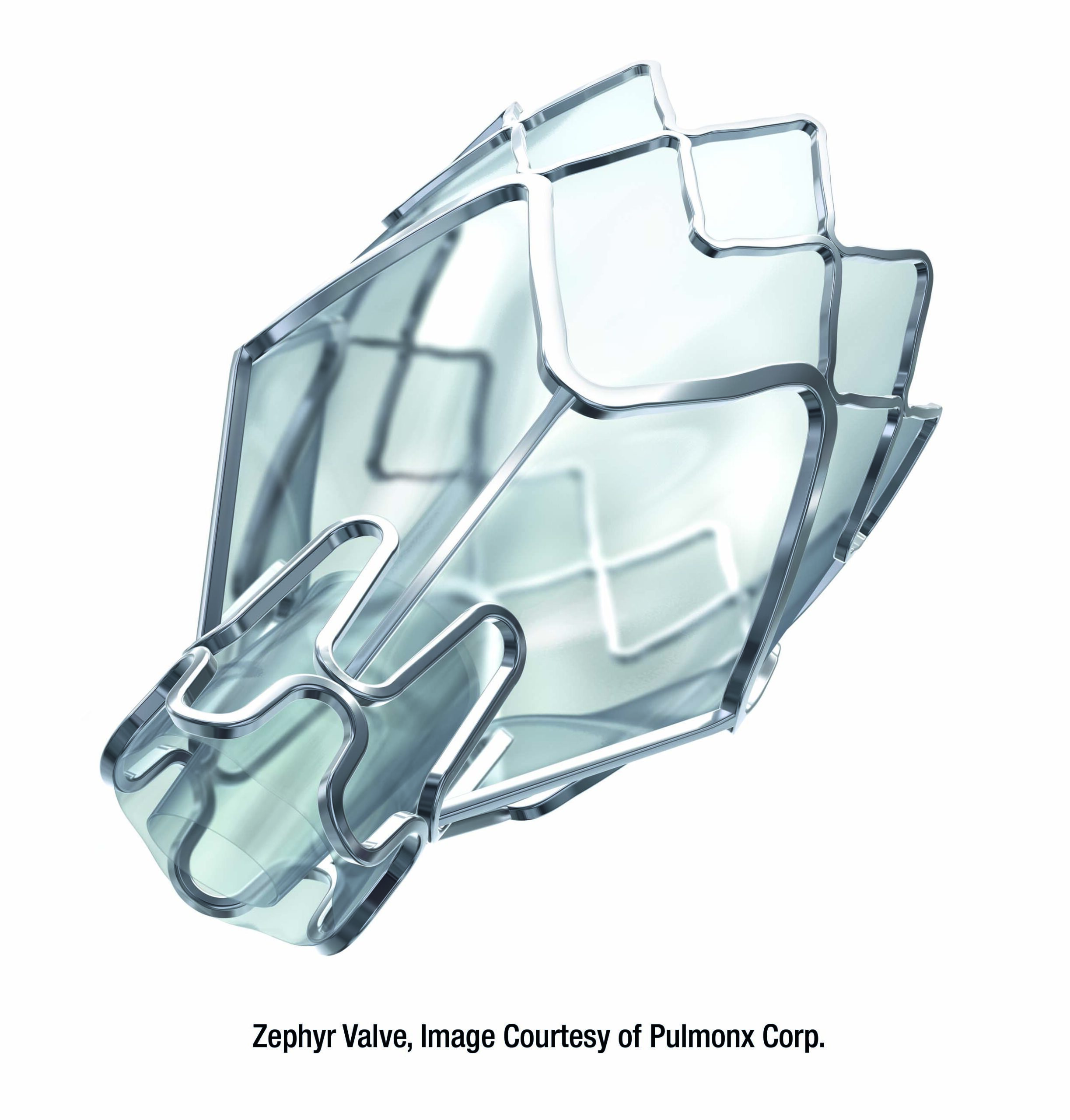
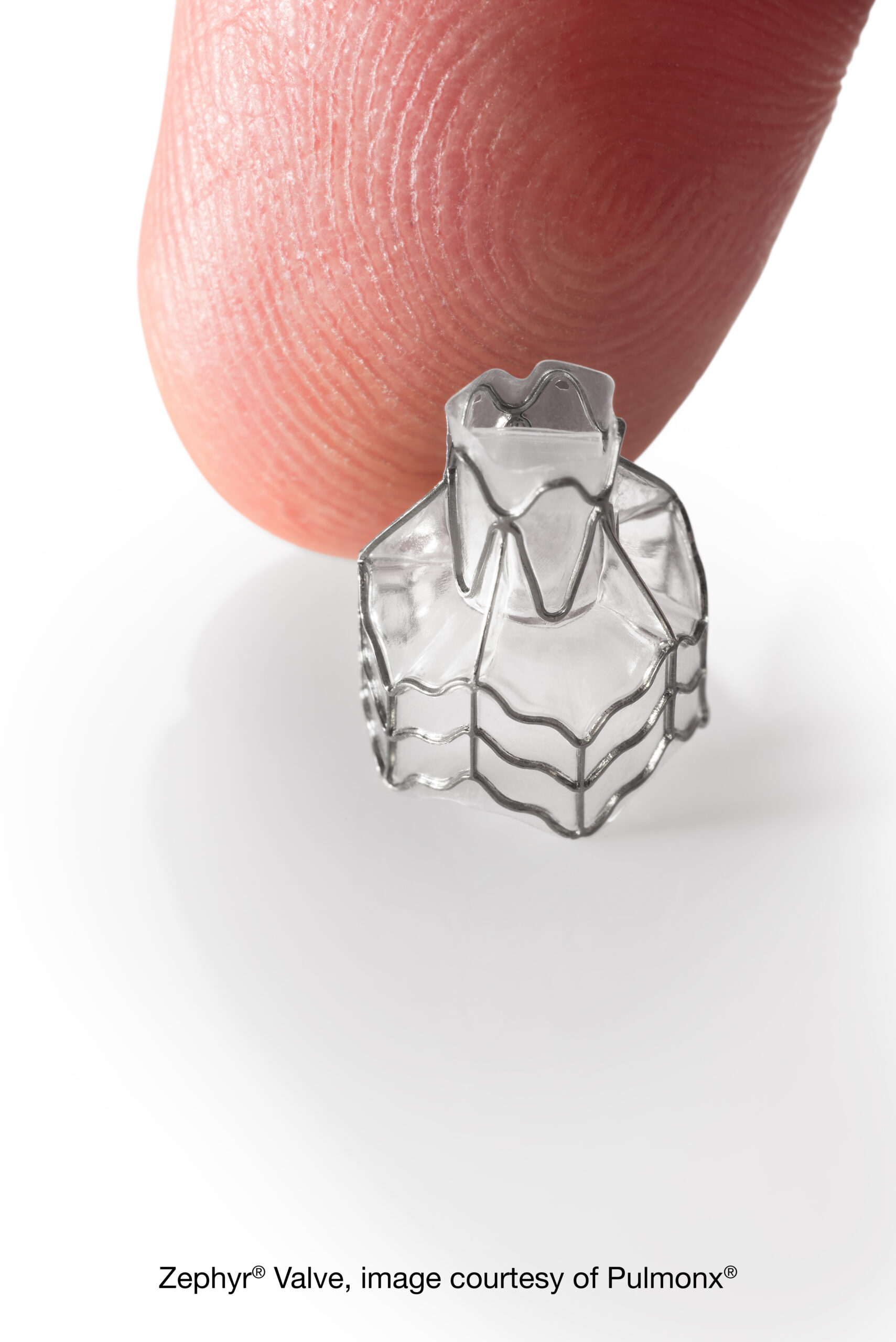
BodyVision Intraoperative CT Imaging
Body Vision Medical’s C-Arm Based Tomography (CABT) provides intraoperative CT like imaging that enable pulmonologists to visualize the actual lung lesion and lesion location during a diagnostic bronchoscopy procedure so that they can confidently biopsy from smaller, more difficult-to-access lung lesions at an earlier stage. This dramatically increases the likelihood of an early, definitive diagnosis for potential lung cancer patients, improving the probability of timely treatment and patient survival.
Body Vision’s intraoperative CT imaging enables pulmonologists to see the actual lesion and lesion location intraoperatively in real-time so that they can precisely navigate to the lung lesion and visually confirm that they are indeed taking tissue samples from within the lesion during biopsy. No other technology readily accessible to pulmonologists enables this kind of image-guided biopsy that has been clinically proven to maximize the likelihood of obtaining a conclusive diagnosis.
